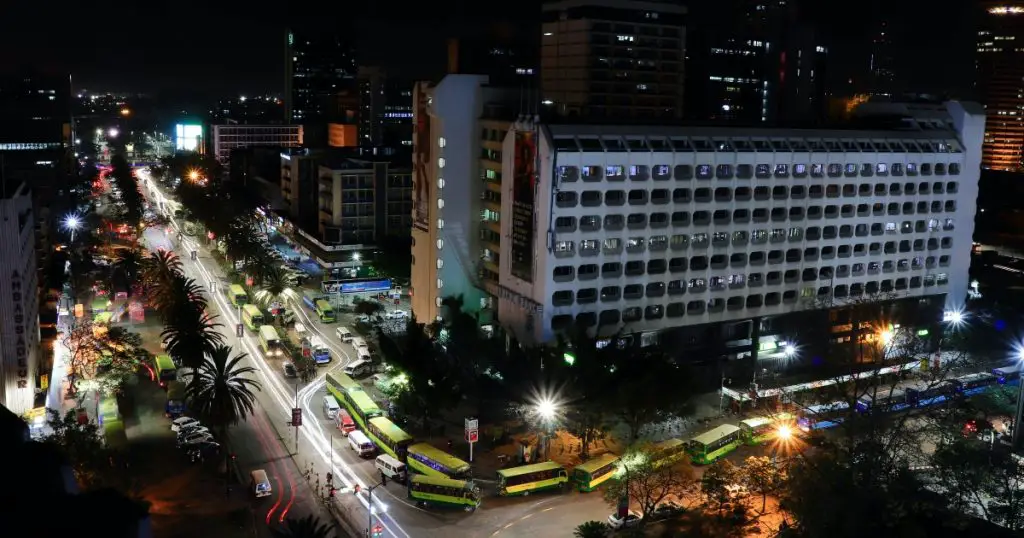- The economy of Kenya will grow by 5.5 per cent in 2022 and 5.2 per cent on average in 2023–24
- Data by World Bank indicates that while still strong, the growth rate will be moderate following a remarkable recovery in 2021 from the worst economic effects of the pandemic
- The bank noted that the impact of the war in Ukraine is weighing on the global economic recovery from the pandemic
The World Bank has projected that Kenya’s real gross domestic product (GDP) will grow by 5.5 per cent in 2022 and 5.2 per cent on average in 2023–24.
According to the group, while still strong, the growth rate will be moderate following a remarkable recovery in 2021 from the worst economic effects of the pandemic.
During the period, the country’s economy grew by 7.5 per cent, much higher than the estimated average growth in Sub-Saharan Africa of 4 per cent.
In the latest report, World Bank noted that the impact of the war in Ukraine is weighing on the global economic recovery from the pandemic.
It further noted that Kenya’s outlook is worsened by the current drought, which is having a devastating effect on food security and livelihoods in affected parts of the country and is causing increased social spending on food assistance.
For example, using the Integrated Food Security Phase Classification, it is estimated that 3.1 million Kenyans (out of 13.6 million) living in counties with arid and semi-arid land are food insecure. The baseline economic projections assume that below-average rains will hamper agricultural performance and accounts for the downside effects of the ongoing war in Ukraine through increased global commodity prices.
Commenting on the finding, World Bank Kenya Director Keith Hansen said that while Kenya’s economy has been resilient, the multiple recent shocks show the urgency of improving social protection mechanisms to cushion the most vulnerable households.
“This will enable Kenya to move away from other more costly and less well-targeted support measures such as fuel subsidies.”
The report further noted that Kenya’s economic performance remained strong in the early months of 2022, but external challenges have mounted.
Kenyan economy to continue recovering but only under compelling conditions
The economy is vulnerable to the commodity price shocks resulting from the war, particularly through fuel, fertiliser, wheat and other food imports.
Global financial conditions have also tightened sharply, increasing external financing costs. However, Kenya’s exposure to the war in Ukraine through direct trade linkages is small, with Russia and Ukraine accounting for only 2.1 per cent of total goods trade between 2015 and 2020. Similarly, tourists from Ukraine and Russia do not account for a significant share of Kenya’s tourism market.
On the upside, measures by the Central Bank of Kenya (CBK) that maintained an accommodative monetary policy stance cushioned the economy and helped bolster recovery.
Inflation has recently moved higher to 7.1 per cent year-on-year in May 2022 as domestic food prices, and fuel prices in March, April and May, increased following the surge in global commodity prices because of the war in Ukraine.
The full impact of the global oil price and other commodity price shocks on domestic prices has been cushioned by government subsidies which have, however, come at a fiscal cost.
In response to the ongoing surge in global commodity prices and supply disruptions that have added to inflationary risks, the CBK increased the Central Bank Rate from 7 to 7.5 per cent in their May 30 meeting to anchor inflationary expectations.
Fiscal consolidation is key to sustaining the recovery, by creating strong conditions for private investment and reopening space for development spending,” said World Bank Kenya Senior Economist, Naomi Mathenge.
Fiscal performance has also benefitted from the strong economic recovery supporting revenues, but this is now being countered by the cost of subsidising fuels.
The rebound in economic activity and ongoing tax reforms and revenue administration improvements have boosted revenue collection.
For example, revenue in the current fiscal year through Q3 remained on target and performed above the previous year’s outturn (12.3 per cent of GDP in Q3 2021/22 against a target of 11.2 per cent of GDP in Q3 2020/21).
As a result, the fiscal deficit in Q3 FY2021/22 shrank to 3.9 per cent of full-year GDP from 4.4 per cent a year earlier. However, the limited pass-through of higher international oil prices to consumers is generating fiscal costs, with the total monthly cost of subsidising fuel estimated to be approximately US million. (Tramadol)
